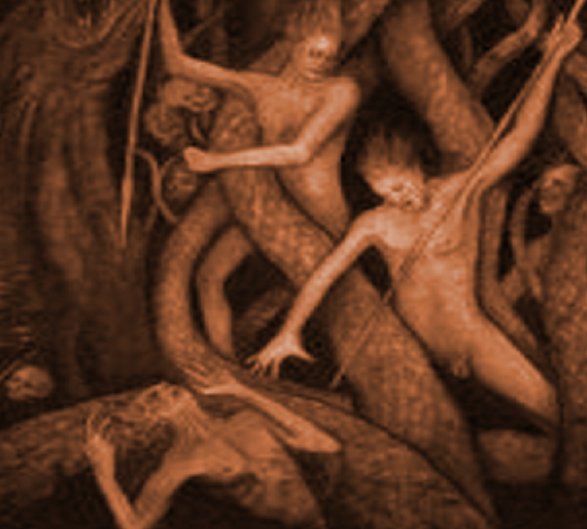Nastrond (Náströnd): Grisly Hall Of Corpses – Norse Vision Of Most Terrible Place In Niflheim, Kingdom Of The Dead
A. Sutherland - AncientPages.com - In Norse mythology, Nastrond (Náströnd) is the 'strand of corpses.' It is the most terrible part of Niflheim, ruled by the god Loki's terrible daughter, Hel.
The grisly Nastrond shore in Hel's kingdom, located under one of the roots of Yggdrasil, is a dark and wet underground cave. All the doors of Nastrond are oriented towards the glacial north to accommodate the terrifying sounds of the winds.
 People wade through venom dripping from the serpents above in Náströnd as attested in Völuspá. An illustration for Völuspá. Lorenz Frølich (1820–1908)
People wade through venom dripping from the serpents above in Náströnd as attested in Völuspá. An illustration for Völuspá. Lorenz Frølich (1820–1908)
The walls are made of twisted snakes pouring their deadly venom. The condemned are tortured by the snakes' poisonous fangs turned towards them and the bites of the wolf Fenrir.
Nastrond is a destination of suffering for those guilty of murder, adultery, and oath-breaking. According to the Norsemen's beliefs, these were the worst possible crimes, and the only punishment they could get was the terrible afterlife in the horrors of Nastrond.
Nastrond is one of the nine punishment holes to which those who committed crimes are taken; they die for the second time after their sentence at the court.
Nidhogg, a dreadful winged corpse-eating dragon, feeds on the corpses of the evil dead. At Ragnarok, the end of the world, Nidhogg would harvest many corpses and continue living in the new world.
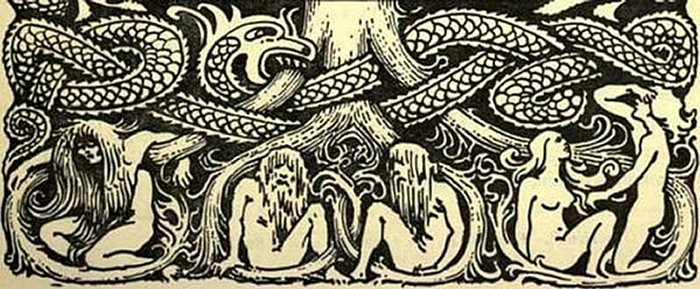 Norse Nastrond was a part of Hel's kingdom of dead.
Norse Nastrond was a part of Hel's kingdom of dead.
Nastrond reminds us of the Greek Tartarus, where the wicked are punished with equal cruelty.
Nastrond is not particularly well-known, and it is cited only from two known sources: one is Völuspá, and another is Prose Edda.
According to the early 13th century Snorri's Edda, on the Nastrond, the nails of the dead built a ship called 'Nagelfare.'
In Norse beliefs, 'Nagelfare' (Old Norse "nail farer") is a boat made entirely from the fingernails and toenails of the dead. During the events of Ragnarok, 'Nagelfare' is prophesied to sail to Vigrid (or Vigridr) carrying the participants of the most significant confrontation of all times, the battle with the gods, which takes place on the plain of Vigrid.
Nearly all the participants must die.
In the beliefs of the Norsemen, there are several places of death, such as Valhalla, Odin's hall that provides a posthumous home for those slain gloriously in battle, and Folkvang, a field ruled over by the goddess Freya where half of those that die in combat go upon death. There is also Niflheim, ruled by Hel, and the hall of the goddess Ran.
In fact, in none of these places, the dead suffer, but in Nastrond, they would suffer. At this point, Nastrond emerges as a symbolic place. In Nastrond, the deceased is punished forever. The condemned have no way out, only the afterlife full of suffering.
Thus this mythical place is somewhat different from other Norse posthumous conceptions.
Written by - A. Sutherland - AncientPages.com Senior Staff Writer
Updated on February 12, 2023
Copyright © AncientPages.com All rights reserved. This material may not be published, broadcast, rewritten or redistributed in whole or part without the express written permission of AncientPages.com
Expand for referencesReferences:
Sigfusson S. and Sturluson S. The Poetic Edda & The Prose Edda
Christiansen E. The Norsemen of the Viking Age
GG Koe, Nidhogg
More From Ancient Pages
-
 3,800-Year-Old Wall Relief Created By Ancient Caral People Unearthed In Peru
Archaeology | Aug 28, 2018
3,800-Year-Old Wall Relief Created By Ancient Caral People Unearthed In Peru
Archaeology | Aug 28, 2018 -
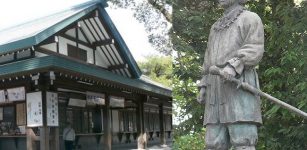 Mystery Of The Kusanagi Treasure: The Legendary Sword
Artifacts | Feb 8, 2016
Mystery Of The Kusanagi Treasure: The Legendary Sword
Artifacts | Feb 8, 2016 -
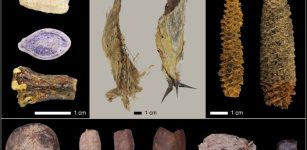 El Gigante Offers Lessons In Sustainability, Evolution And Human Adaptation, Courtesy Of The Holocene
Archaeology | Jun 29, 2023
El Gigante Offers Lessons In Sustainability, Evolution And Human Adaptation, Courtesy Of The Holocene
Archaeology | Jun 29, 2023 -
 525-Million-Year-Old Fossil Defies Textbook Explanation For Brain Evolution
Archaeology | Nov 25, 2022
525-Million-Year-Old Fossil Defies Textbook Explanation For Brain Evolution
Archaeology | Nov 25, 2022 -
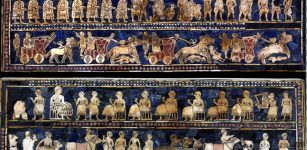 Image Of The Day: ‘The Standard of Ur – War And Peace’
Civilizations | Sep 7, 2015
Image Of The Day: ‘The Standard of Ur – War And Peace’
Civilizations | Sep 7, 2015 -
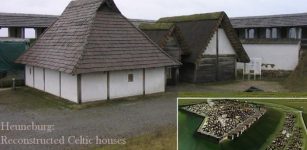 Heuneburg Early Celts’ Settlement: Wine Was Available To All Residents Not Only To Elite
Archaeology | Oct 25, 2019
Heuneburg Early Celts’ Settlement: Wine Was Available To All Residents Not Only To Elite
Archaeology | Oct 25, 2019 -
 The Maya Produced Rubber 3,000 Years Before Goodyear
Ancient History Facts | Mar 12, 2016
The Maya Produced Rubber 3,000 Years Before Goodyear
Ancient History Facts | Mar 12, 2016 -
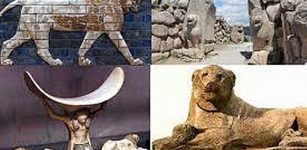 The Majestic Lion: Ancient Symbol Of Power And Royalty Found World-Wide
Ancient Symbols | Oct 10, 2017
The Majestic Lion: Ancient Symbol Of Power And Royalty Found World-Wide
Ancient Symbols | Oct 10, 2017 -
 How Did St. Nicholas Become Santa Claus? – History, Legend And Tradition
Featured Stories | Dec 22, 2023
How Did St. Nicholas Become Santa Claus? – History, Legend And Tradition
Featured Stories | Dec 22, 2023 -
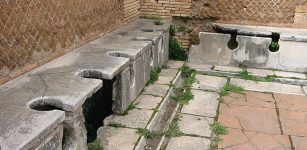 The Romans Spread Parasites – Their Hygienic Innovations Gave No Health Benefit
Archaeology | Jan 9, 2016
The Romans Spread Parasites – Their Hygienic Innovations Gave No Health Benefit
Archaeology | Jan 9, 2016 -
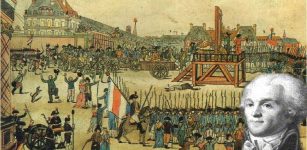 On This Day In History: Maximilien Robespierre Sent To The Guillotine – On July 28, 1794
News | Jul 28, 2016
On This Day In History: Maximilien Robespierre Sent To The Guillotine – On July 28, 1794
News | Jul 28, 2016 -
 Rhetorica ad Herennium: Ancient Book That Improves Your Memory Using Method Of Loci – You Can Test It Easily
Featured Stories | Nov 13, 2023
Rhetorica ad Herennium: Ancient Book That Improves Your Memory Using Method Of Loci – You Can Test It Easily
Featured Stories | Nov 13, 2023 -
 On This Day In History: Captain James Cook Spotted The East Coast Of Australia – On Apr 19, 1770
News | Apr 19, 2016
On This Day In History: Captain James Cook Spotted The East Coast Of Australia – On Apr 19, 1770
News | Apr 19, 2016 -
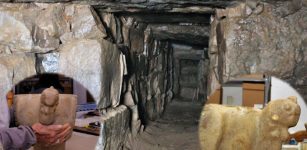 35 Secret Underground Passageways Discovered Beneath Chavín De Huántar Temple Complex In Peru
Archaeology | Jun 1, 2022
35 Secret Underground Passageways Discovered Beneath Chavín De Huántar Temple Complex In Peru
Archaeology | Jun 1, 2022 -
 Bjorn Ironside: Famous Viking Who Captured Luna By Mistake Instead Of Ancient Rome As Planned
Featured Stories | Jun 11, 2016
Bjorn Ironside: Famous Viking Who Captured Luna By Mistake Instead Of Ancient Rome As Planned
Featured Stories | Jun 11, 2016 -
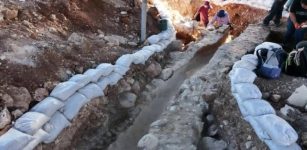 Massive Well-Preserved Second Temple-Era Aqueduct Unearthed In Jerusalem
Archaeology | Aug 29, 2023
Massive Well-Preserved Second Temple-Era Aqueduct Unearthed In Jerusalem
Archaeology | Aug 29, 2023 -
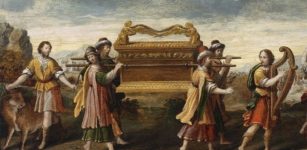 Archaeologists Will Soon Excavate Biblical Site Where Ark Of The Covenant Once Stood
Archaeology | Feb 23, 2017
Archaeologists Will Soon Excavate Biblical Site Where Ark Of The Covenant Once Stood
Archaeology | Feb 23, 2017 -
 On This Day In History: Dr Martin Luther King Was Born – On Jan 15, 1929
News | Jan 15, 2017
On This Day In History: Dr Martin Luther King Was Born – On Jan 15, 1929
News | Jan 15, 2017 -
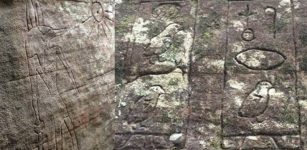 Mysterious Gosford Glyphs: Remarkable Ancient Egyptian Hieroglyphs Discovered In Australia Could Re-Write History
Featured Stories | Feb 20, 2020
Mysterious Gosford Glyphs: Remarkable Ancient Egyptian Hieroglyphs Discovered In Australia Could Re-Write History
Featured Stories | Feb 20, 2020 -
 Discovered: Mysterious 2,400-Year-Old Ancient Egyptian Shrine Belonging To 30th Dynasty Pharaoh Nectanebo I
Archaeology | Oct 6, 2015
Discovered: Mysterious 2,400-Year-Old Ancient Egyptian Shrine Belonging To 30th Dynasty Pharaoh Nectanebo I
Archaeology | Oct 6, 2015

